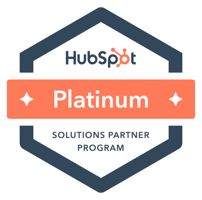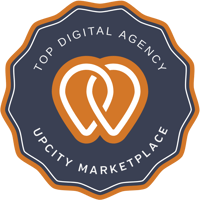How can you tell whether your current sales enablement processes are really propelling your business forward? Or whether they're just "treading water?" You may need to pause and take stock of the situation. Here are some key factors to include in your sales enablement assessment. Factors that will help you to determine if there's room for improvement (and if so, where it is).

1. Your Sales Enablement Platform
You may want to start your assessment with the platform your team is using. Ideally, your sales enablement platform should include these features:
Ease of use.
Granted, any sales enablement platform will come with a learning curve as reps become acquainted with it. However, you don't want to invest in a platform that's clunky, overly complicated, or challenging to navigate. The more time sales reps have to spend on figuring out how to get from Point A to Point B on their interface, the less time they'll have to spend on helping prospects along their buyer's journey. All things being equal, a simple, easy-to-use platform is always better than a convoluted, difficult one.
Compatibility with other sales tools and systems.
In many situations, sales reps have to use multiple platforms and applications throughout the course of a day in order to perform their duties effectively. Obviously, the more seamlessly these separate tools integrate with one another, the smoother your employees' workflow will be. With that in mind, you'll want to use a sales enablement platform that is compatible with any CRM systems, email clients, communication tools, and social media networks your company is using.
Bleeding-edge technology.
At their core, sales enablement platforms are organizational tools. However, they can be much more than that when combined with the latest technological advances. For instance, imagine how impressed prospects would be if your reps could use augmented reality to "immerse" them in a use-case scenario for one of your products. Your team would probably close sales at a faster rate than ever before!
2. Your Sales Enablement Content
Relevant, timely, and valuable content is another big piece of the puzzle when it comes to effective sales enablement. You want to make sure that the content your team is developing and distributing can stand up to scrutiny. And if it passes the test, you want to make it as easy as possible for your reps to share it with their prospects and leads. Here are two key questions to ask yourself:
1. Have we developed sales content for all stages of the customer's journey?
It's possible for a marketing team to focus on content creation for one stage of the sales funnel. Neglecting other equally critical stages in the process. For example, if your current business objectives emphasize brand awareness over lead generation, then it can be easy to concentrate on the development of "awareness stage" content (high-level blogs and social posts). Leaving "consideration stage" pieces (like case studies and comparison charts) on the back burner.
The point is, you want to make sure that your content library covers all stages of the customer's journey. From the initial awareness phase to the final purchase decision. If need be, lean on your sales team's expertise to create more specialized pieces of content that high-quality leads can chew on. But don't ignore any funnel stage — otherwise, it could become a harmful "bottleneck" for your sales process.
2. Can our sales reps easily share our content with others?
Even if you have great content in your library that encompasses all stages of the buyer's journey, you won't benefit from it unless your sales reps can easily share it with prospects and leads. Does your sales enablement platform empower team members to do just that? Or is there some friction involved in something as simple as forwarding a link? Ideally, your sales reps should be able to share valuable content with a prospective customer (or even with one another) within a matter of seconds, once they've found what they were looking for.
3. Your Sales Enablement Coaching
One final, but crucial factor to take into account during your sales enablement assessment is the training aspect. A solid sales enablement strategy should have ongoing coaching and training elements baked into it. Here are some examples of how to evaluate the effectiveness of your current processes in this regard:
Role-playing.
This is perhaps the most straightforward way to evaluate how prepared your reps are. You can engage with your team members in role-playing sessions to not only "test-drive" new content before rolling it out to your consumers but to also gauge how comfortable they are at using the sales enablement tools available to them.
Social media usage.
Many sales professionals still struggle with social selling. However, research and experience show that organizations heavily invested in social media marketing enjoy significant revenue growth compared with companies that lag behind. It may be good to ask: "How many team members are engaging in social selling? Are we training them on how to sell via social media platforms like LinkedIn, or expecting them to figure it out on their own?"
You may need to develop a program for coaching your reps. Then use appropriate KPIs to gauge their progress moving forward.
Alignment on lead management.
One critical component of a sales enablement strategy is the hand-off process for quality leads between marketing and sales. How are your teams doing on this count? Is there a clear alignment between your marketing and sales departments? Or is there disagreement over what constitutes a Marketing Qualified Lead vs. a Sales Qualified Lead?
If you see room for improvement here, work with leaders from both departments to establish a mutually acceptable process for lead management.

Conclusion
In summary, it's important to periodically take a step back and evaluate your sales enablement processes. When your platform is user-friendly and seamlessly integrates with your other tools, there will be minimal friction as your sales team uses the system to nurture leads. When your content is not only valuable but also encompasses all stages of the customer journey, it will be harder for quality leads to slip through the cracks. And when your team is well-coached and aligned with other departments, they'll be more productive than ever before.
Take advantage of our free Hubspot CRM Configuration to start modernizing your sales process. This is a limited-time offer where we will design a sales pipeline specifically for your business. Start generating more revenue and improve your close rates by building your first high-performing sales pipeline on HubSpot at no cost. Simply schedule a discovery session with our team of HubSpot experts.
Would you like to learn more about how to conduct a thorough sales enablement assessment? If you have any other sales enablement questions, reach out to our team of experts at OverGo Studio today for a free consultation. We'd be happy to answer any questions you have.


